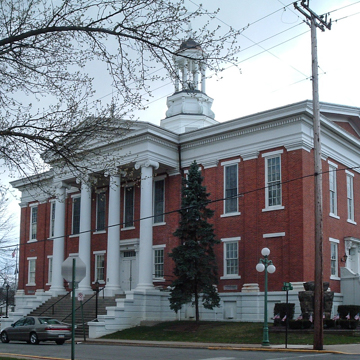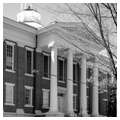Market Street was already the commercial district when Lewisburg became the county seat, forcing the new courthouse to be located on a side block in a residential neighborhood. War memorials were similarly shifted from their customary place in the center of town. A monument to the Spanish-American War was built on the courthouse grounds, but the Civil War monument (1901) is on the edge of town at S. 3rd and St. George streets. Palmer's red brick Classical Revival courthouse blends in with Lewisburg's other contemporary public buildings built in the same style, including North Ward School (1855) at 116 N. 2nd Street and the First Presbyterian Church (1856) at 16 Market Street. The four-columned Ionic portico, dentiled cornice and pediment, and domed bell tower are Palmer's, but the rest of the building was constructed in 1973.
You are here
Union County Courthouse
If SAH Archipedia has been useful to you, please consider supporting it.
SAH Archipedia tells the story of the United States through its buildings, landscapes, and cities. This freely available resource empowers the public with authoritative knowledge that deepens their understanding and appreciation of the built environment. But the Society of Architectural Historians, which created SAH Archipedia with University of Virginia Press, needs your support to maintain the high-caliber research, writing, photography, cartography, editing, design, and programming that make SAH Archipedia a trusted online resource available to all who value the history of place, heritage tourism, and learning.





